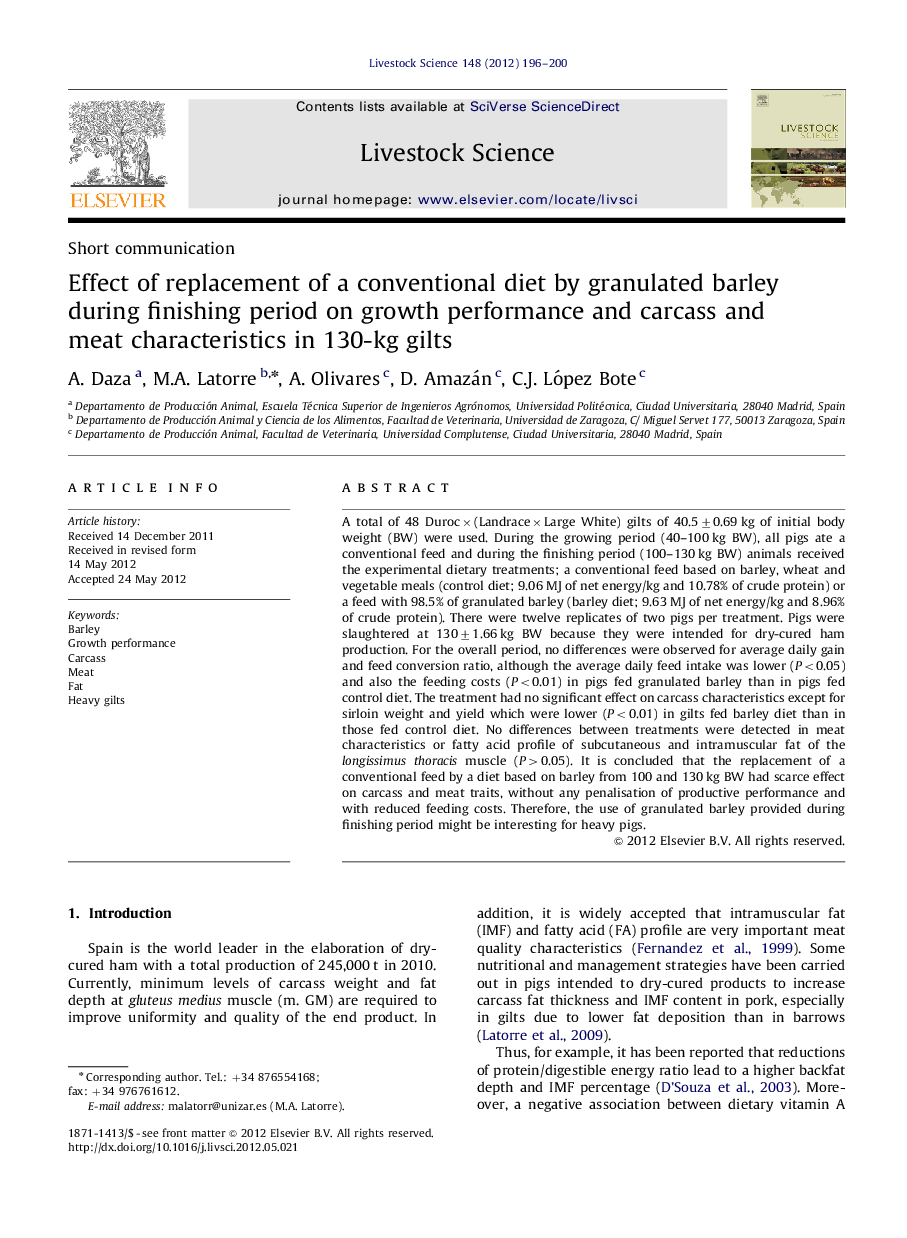| Article ID | Journal | Published Year | Pages | File Type |
|---|---|---|---|---|
| 5790689 | Livestock Science | 2012 | 5 Pages |
Abstract
A total of 48 DurocÃ(LandraceÃLarge White) gilts of 40.5±0.69 kg of initial body weight (BW) were used. During the growing period (40-100 kg BW), all pigs ate a conventional feed and during the finishing period (100-130 kg BW) animals received the experimental dietary treatments; a conventional feed based on barley, wheat and vegetable meals (control diet; 9.06 MJ of net energy/kg and 10.78% of crude protein) or a feed with 98.5% of granulated barley (barley diet; 9.63 MJ of net energy/kg and 8.96% of crude protein). There were twelve replicates of two pigs per treatment. Pigs were slaughtered at 130±1.66 kg BW because they were intended for dry-cured ham production. For the overall period, no differences were observed for average daily gain and feed conversion ratio, although the average daily feed intake was lower (P<0.05) and also the feeding costs (P<0.01) in pigs fed granulated barley than in pigs fed control diet. The treatment had no significant effect on carcass characteristics except for sirloin weight and yield which were lower (P<0.01) in gilts fed barley diet than in those fed control diet. No differences between treatments were detected in meat characteristics or fatty acid profile of subcutaneous and intramuscular fat of the longissimus thoracis muscle (P>0.05). It is concluded that the replacement of a conventional feed by a diet based on barley from 100 and 130 kg BW had scarce effect on carcass and meat traits, without any penalisation of productive performance and with reduced feeding costs. Therefore, the use of granulated barley provided during finishing period might be interesting for heavy pigs.
Related Topics
Life Sciences
Agricultural and Biological Sciences
Animal Science and Zoology
Authors
A. Daza, M.A. Latorre, A. Olivares, D. Amazán, C.J. López Bote,
